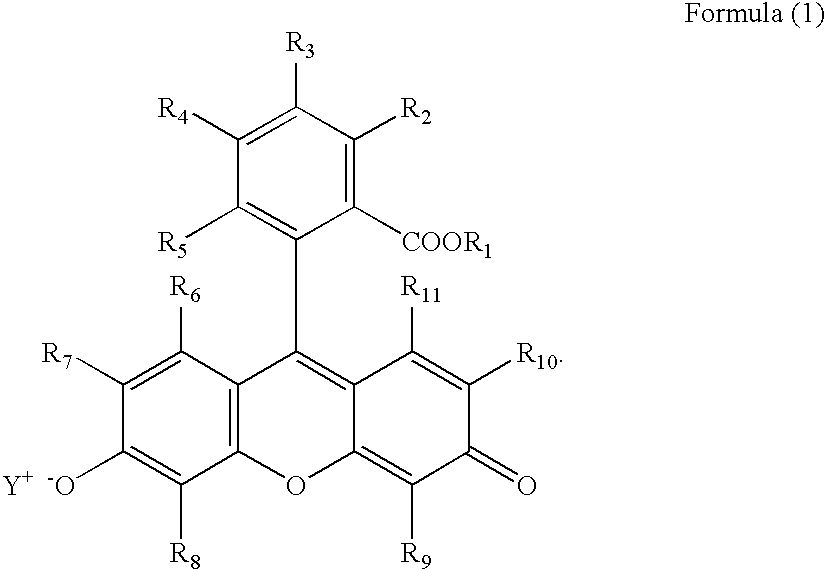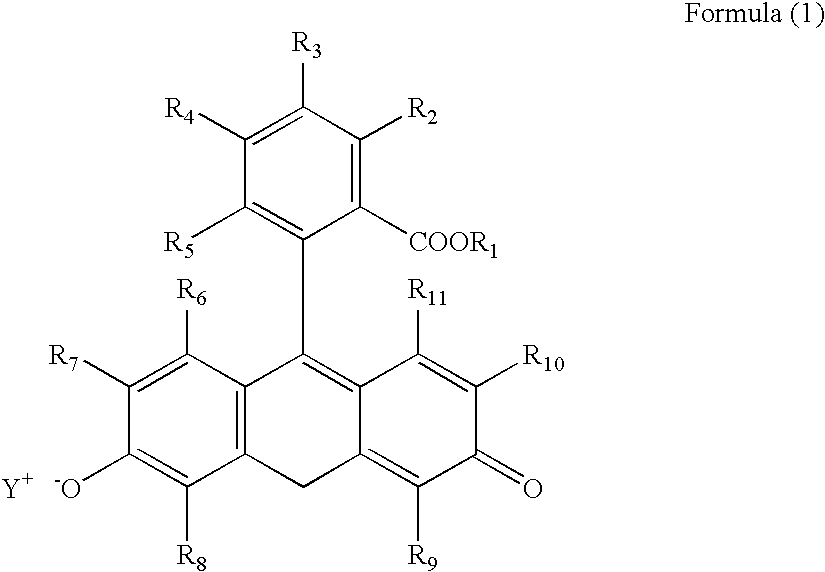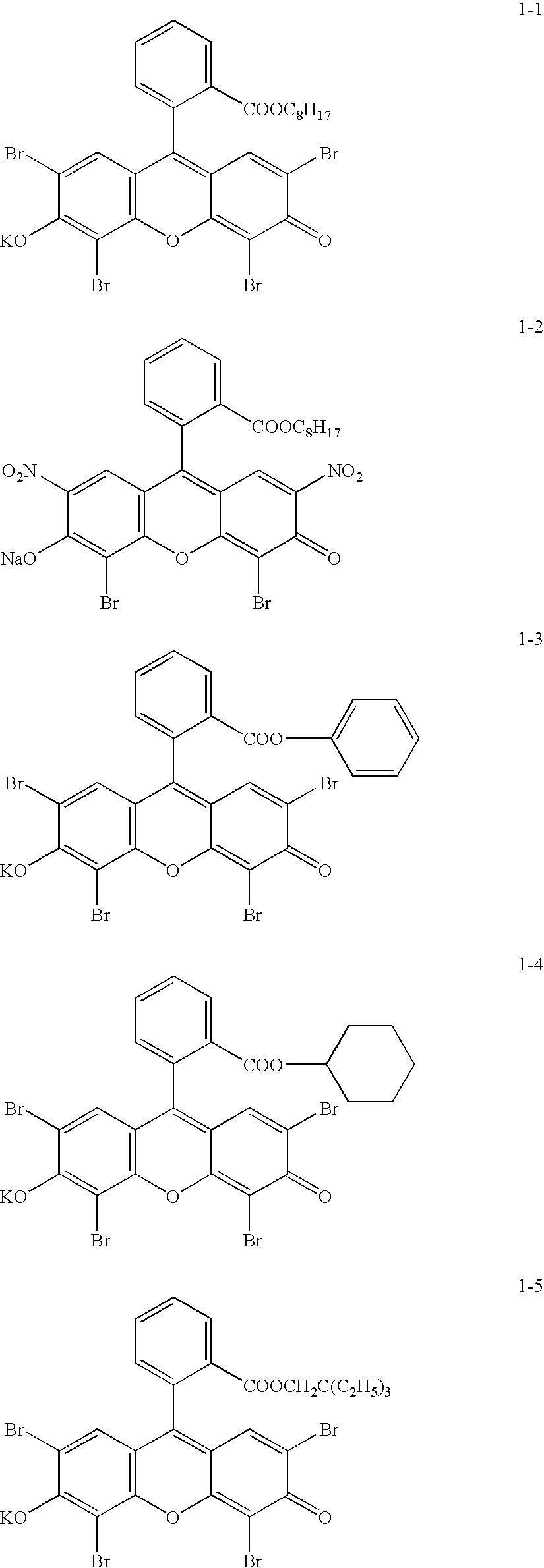Planographic printing plate material and planographic printing plate preparing process
a technology material, applied in the field of planographic printing plate, can solve the problems of unsatisfactory preheating latitude considering printing durability, insufficient practical properties, development failure, etc., and achieve the effects of accelerating development, high density image, and easy to increase the accuracy of an optical system
- Summary
- Abstract
- Description
- Claims
- Application Information
AI Technical Summary
Benefits of technology
Problems solved by technology
Method used
Image
Examples
example 1
[0184]Methyl methacrylate of 58.0 parts (0.58 mol), 35.0 parts (0.41 mol) of methacrylic acid, 6.0 parts (0.05 mol), of ethyl methacrylate, 100 parts of ethanol, and 1.23 parts of α,α′-azobisisobutyronitrile were put in a three neck flask under nitrogen atmosphere, and reacted under nitrogen atmosphere for 6 hours at 80° C. in an oil bath. After that, the reaction mixture was added with 1 part of triethylbenzylammonium chloride and 28.0 parts (0.2 mol) of glycidyl methacrylate (epoxy-containing unsaturated compound) and reacted at 25° C. for additional 3 hours. Thus, polymer binder A was obtained. The weight average molecular weight of the polymer binder A was 70,000, measured according to GPC.
[0185]Polymer binders B and C were prepared in the same manner as in Polymer binder A, except that a mixture ratio pf monomers, and an addition amount of the epoxy compound for reacting with the carboxyl group were changed as shown in Table 1, and polymerization time was adjusted to give a wei...
example 2
[0204]Planographic printing plate material samples No. 12 through 28 were prepared in the same manner as in Example 1, except that the polymer binder, the co-initiator and the dye were changed to those as shown in Table 3, and evaluated in the same manner as in Example 1. Herein, the following printing durability 2 was further evaluated.
>
[0205]Printing was carried out except that soybean ink Naturalith 100 produced by Dainippon Ink Kagaku Kogyo Co., Ltd. was used as printing ink. The number of prints printed from the beginning of the printing till when dots at highlight image portions were reduced by 3% or filling-up was observed at shadow portions was evaluated as a measure of printing durability 2.
[0206]The results are shown in Table 3.
[0207]
TABLE 3PrintingPrintingStorage StabilityDura-Dura-PrintingCo-Sensi-bility 1bility 2DurabilityPreheat-SludgeSamplePolymeriniti-Dye 3tivity(x(xSensi-1 (xingAmountNo.Binderator(R)(μj / cm2)10,000)10,000)tivity10,000)Latitude(g)12BCI-13Octyl7077No71...
PUM
| Property | Measurement | Unit |
|---|---|---|
| emission wavelength | aaaaa | aaaaa |
| temperature | aaaaa | aaaaa |
| mol % | aaaaa | aaaaa |
Abstract
Description
Claims
Application Information
 Login to View More
Login to View More - R&D
- Intellectual Property
- Life Sciences
- Materials
- Tech Scout
- Unparalleled Data Quality
- Higher Quality Content
- 60% Fewer Hallucinations
Browse by: Latest US Patents, China's latest patents, Technical Efficacy Thesaurus, Application Domain, Technology Topic, Popular Technical Reports.
© 2025 PatSnap. All rights reserved.Legal|Privacy policy|Modern Slavery Act Transparency Statement|Sitemap|About US| Contact US: help@patsnap.com



